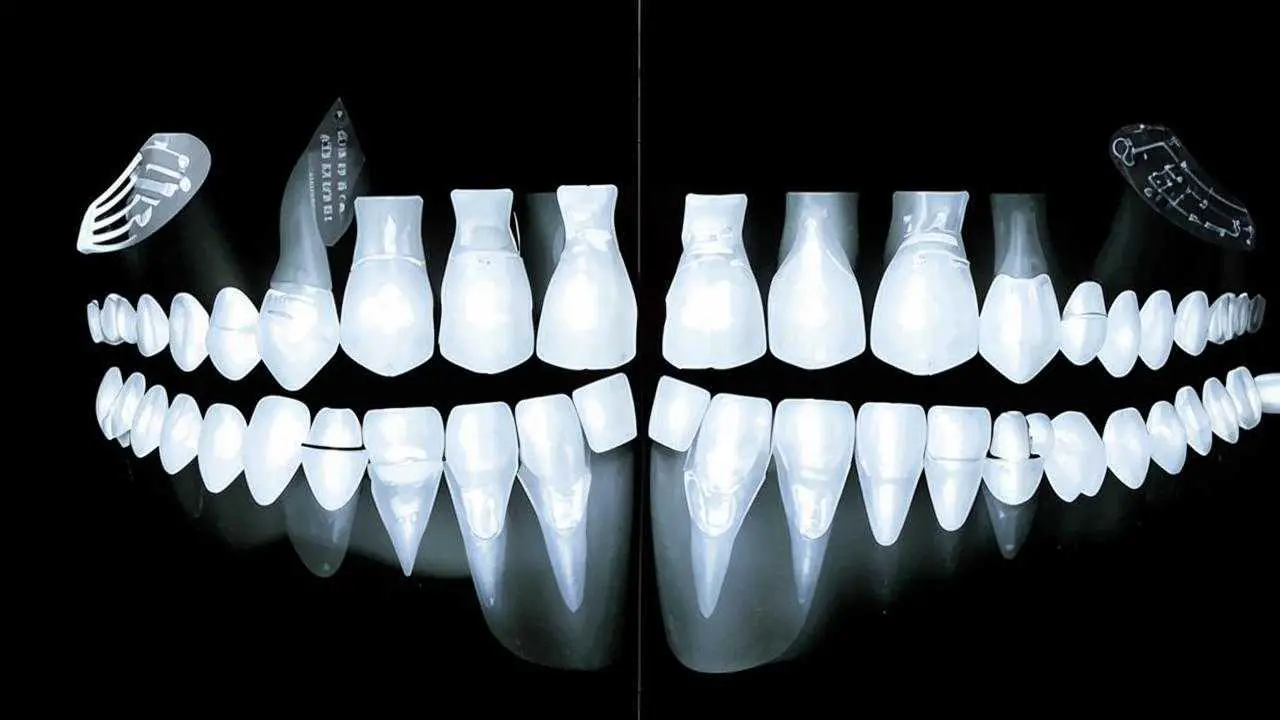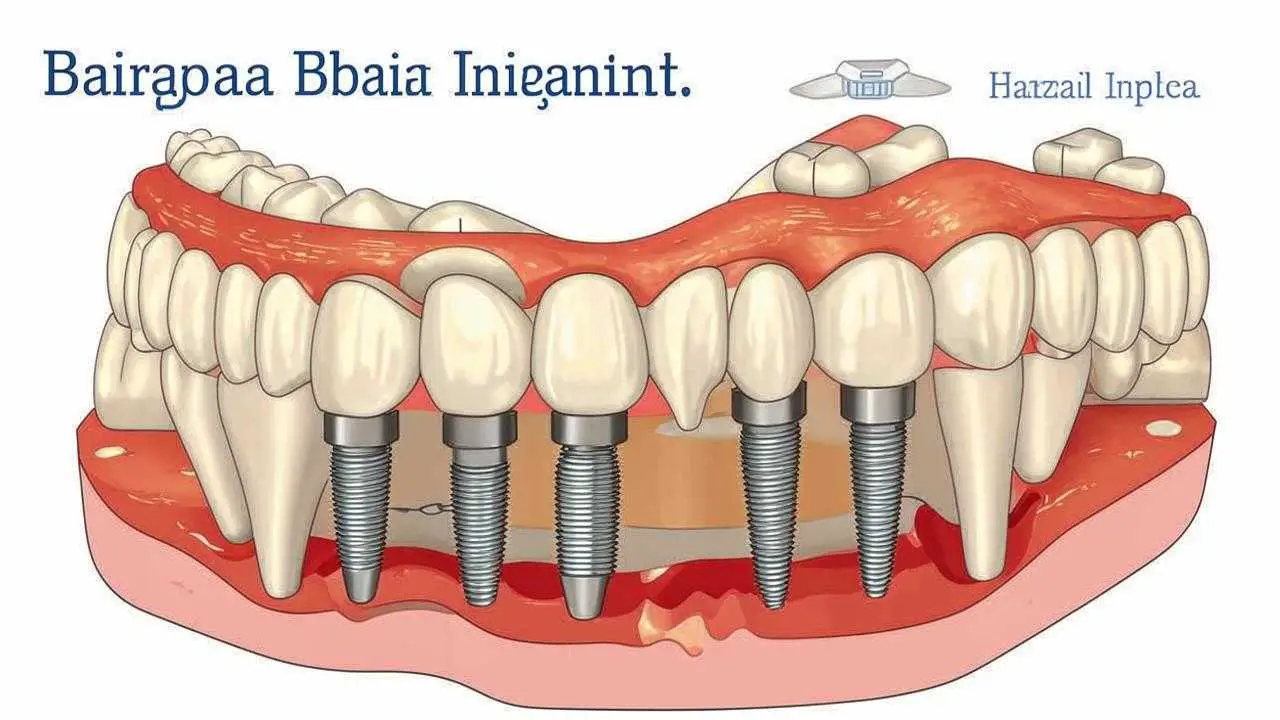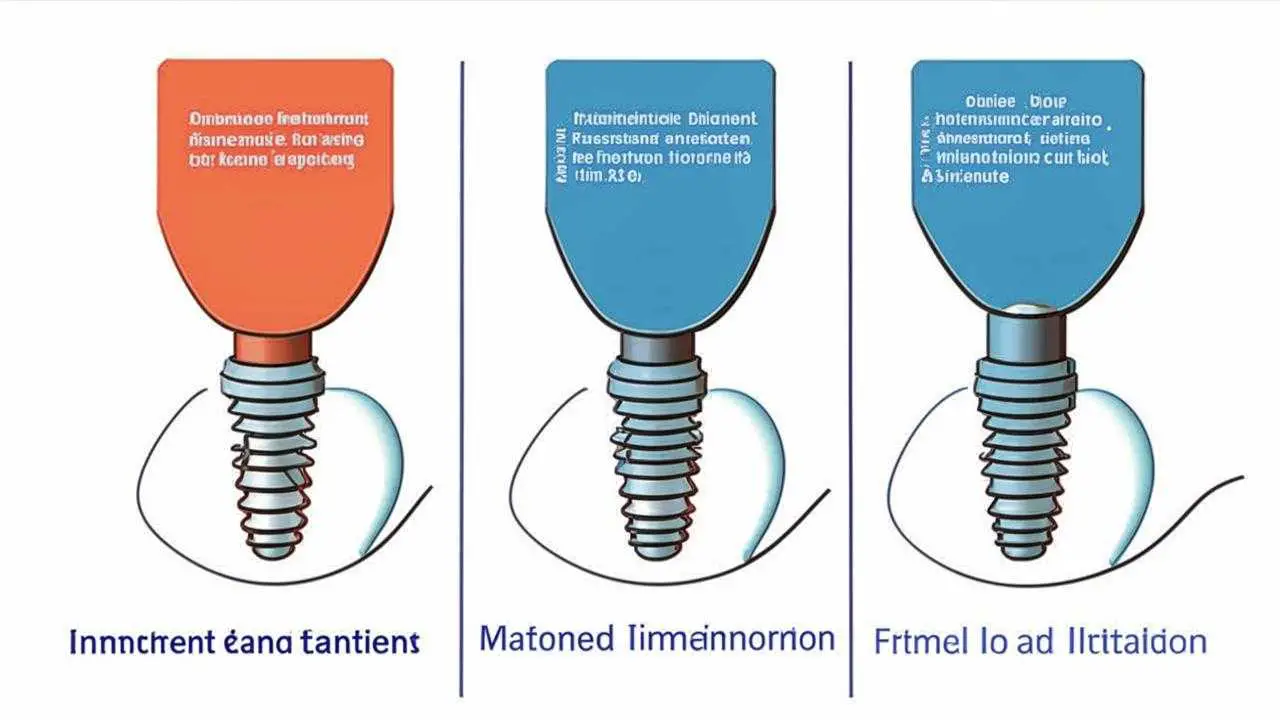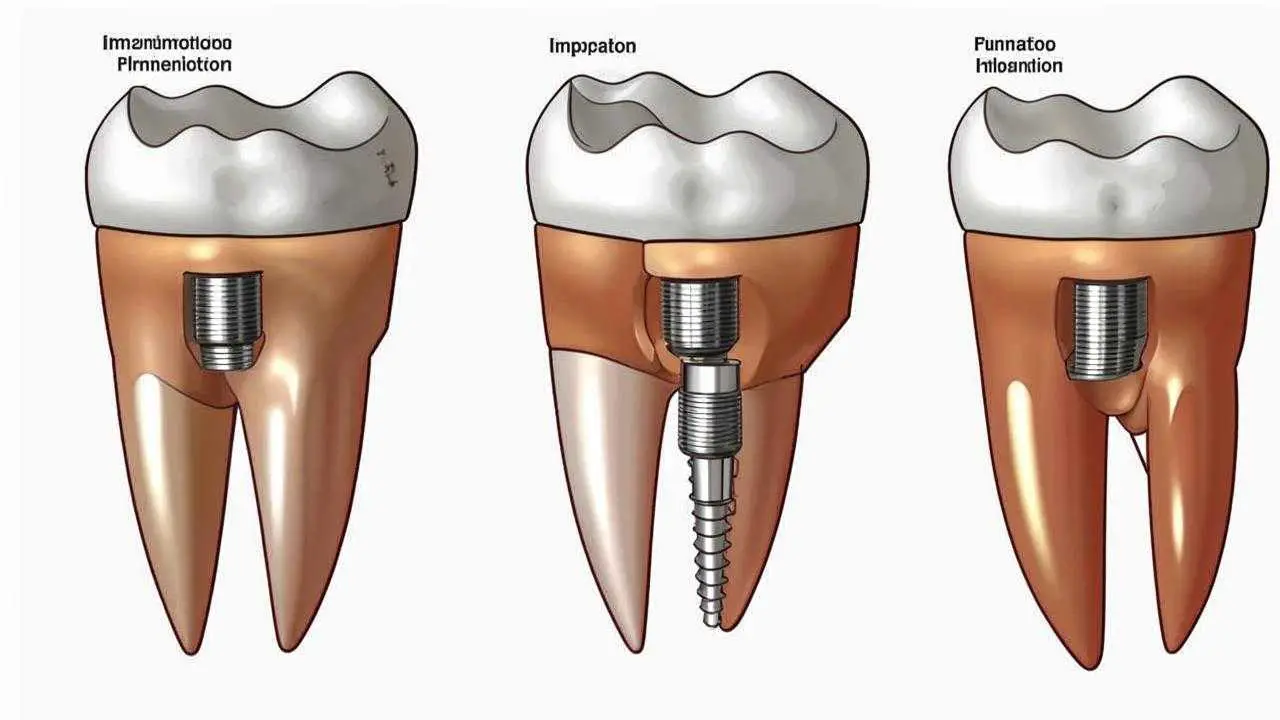Implantation is the only prosthetic method that restores the functionality of the entire tooth, not just the crown part. A dental implant is a multi-component construction made of biocompatible material (titanium and its alloys) that is inserted into the jawbone to replace a missing tooth unit. It fully replaces the natural tooth, taking over all its functions. Those who dare to implant are usually interested in how dental implants take root, how long it takes, and what problems may arise.
The viability of the artificial root depends not only on the choice of its type, shape and size according to the parameters of the jawbone. But also on the general state of health, the correctness of implant placement, compliance with the doctor’s instructions in the postoperative period.
How long do dental implants take to heal
The process of fusion of the implant with the bone is called osseointegration. It occurs in this way:
- In the first 30 days after the implantation of the artificial root, trabeculae of spongy substance that form the bone tissue framework begin to actively form around it. During this period, the tissue around the implant is soft, loose, and easily traumatized.
- After about 3 months, the soft, loose spongy structure forms into dense lamellar bone, firmly holding the titanium root. During this period, the implant can be loaded with a prosthesis.
- Full fusion with the jaw bone occurs after 1.5 years.
Different factors influence the survival rate of dental implants – from the implantation protocol used to the jaw in which the structure is integrated (lower or upper jaw). After implantation, enough time must pass for the bone tissue to “accept” the artificial root and begin to grow around it, providing a stable, strong fixation.
Why the implant may not take root
The most frightening thing that scares patients is the risk of rejection of the construct. Thanks to modern protocols and materials, the percentage of implant engraftment is as high as possible(97-98%). When installing original implant systems Astra Tech, Nobel Biocare, ROOTT, Straumann, the rejection rates do not exceed 0.2-0.5%, that is, the survival rate is almost one hundred percent.
The doctor will answer the question why dental implants do not take root after examination and diagnostics. But the patient should be more attentive, do not ignore the alarming signs, immediately go to the implantologist. The success of the operation and engraftment are influenced by:
- the state of health;
- the quality of preparation for surgery;
- the choice of implants;
- implantation protocol;
- correctly calculated prosthesis design;
- careful adherence to the doctor’s recommendations in the postoperative period.
Attention to all of these points reduces the probability of rejection of the design to zero. Usually titanium root grafting in the classical two-stage implantation takes at least 3 months. After fusion of the structure with the bone, an abutment is fixed on them, and an artificial crown or prosthesis is placed on top. With express-implantation or basal complex, engraftment is faster. The implanted roots are loaded with a temporary prosthesis on 1-3 days after surgery.
Main causes of rejection
- Peri-implantitis – tissues around the implant are inflamed for various reasons: due to undetected contraindications to implantation, poor oral preparation for surgery (untreated caries, gum disease in the active phase, etc.), violations of the installation protocol, failure to fulfill the doctor’s instructions after surgery.
- Peculiarities of the jawbone structure – in loose, porousbone, even with sufficient bone volume, the titanium construction will not hold. To avoid problems, the bone is additionally strengthened with special materials.
- Intolerance to the implant material – although titanium and its alloys are biocompatible with bone structures, sometimes allergies develop. This usually occurs if implant systems of dubious quality are used, having various harmful impurities in their composition.
- Systemic diseases – endocrine, immune, cardiovascular pathologies, oncologic processes significantly increase the risk of rejection of the artificial root.
- Improper osseointegration – when installing low-quality systems, their components coming into contact with jaw structures, provoke the formation of fibrous tissue rather than bone. As a result, instead of strong bone tissue, a connective tissue capsule is formed around the implant, which cannot hold the construction and it falls out.
The network of RUTT clinics in Moscow uses reliable, proven implant systems. Before the operation, patients undergo a comprehensive examination to assess the peculiarities of the dentoalveolar system and contraindications. Implantation is performed after all risks have been eliminated, so the above-mentioned moments are minimized.
Signs of implant non-adhesion
Swelling, soreness, slight fever, bleeding gums 3-5 days after implantation is a normal reaction to the intervention. Within a week these symptoms disappear. If the symptoms persist longer than this time and increase, you should immediately consult an implantologist.
Signs of peri-implantitis on X-rays
Signs of rejection can occur not only during the rehabilitation period, but also later. How to realize that the implant is not taking root:
- pronounced swelling, hyperemia of the mucosa, persisting longer than 5 days after the intervention;
- acute pain that increases when pressing on the gum;
- the appearance of bad odor;
- purulent discharge;
- bleeding for more than 2 days, bloody for more than 7 days;
- temperature of 38 ° C and above, not relieved by antipyretics;
- mobility of the implant, its falling out.
Sometimes there are no visual signs of rejection, the artificial root simply falls out. As a rule, if the implanted root is not rejected during a month – osseointegration is normal. But it happens when the artificial root is rejected at a late stage, after the prosthesis has been installed. The reasons may be viral diseases acquired after implantation, immune diseases, trauma.
Contraindications to implantation
Contraindications to the procedure are divided into absolute and relative. The absolute ones, in which the operation is impossible, include:
- oncology in the active phase;
- diabetes mellitus in decompensated stage;
- mental disorders;
- acute tuberculosis;
- blood coagulation abnormalities;
- severe cardiovascular pathologies;
- heart attack, stroke less than 6 months ago;
- allergy to anesthetics, implant material;
- connective tissue diseases.
Relative restrictions:
- Age under 18 years;
- poor oral hygiene;
- bad habits (alcoholism, smoking abuse);
- pregnancy, actuation;
- systemic diseases in the period of exacerbation;
- infectious-inflammatory processes.
The possibility to combine installation protocols significantly reduces the list of contraindications, allowing to solve almost any clinical problem. One-stage protocols make it possible to perform implantation in patients with HIV, periodontitis, periodontal disease, endocrine pathologies, hepatitis B, C, other complex diseases that were previously considered an absolute contraindication to implantation.
Patients with periodontal pathologies are interested in the question of whether implants take root in periodontal disease. In one-stage protocols, different implant models (compression, basal) are combined. They have a high rate of stability immediately after surgery. Basal models are not placed in the cancellous bone, but in the deeper bone sections – basal, bicortical, which are not subject to atrophy. The inclined position increases the area of contact between the implants and the bone and accelerates osseointegration.
How long the implant takes to heal
Osteointegration is influenced by the type of implant system (type, shape, coating, thread type, connection to the abutment) and the way it is inserted. The type of implants, the method of implantation, the doctor chooses according to the clinical picture. One- and two-stage technologies are used:
- Classical implantation (two-stage protocol) – two-component models are used, root-shaped. The root part of the implant is placed in the jaw, closed with a plug and sutured. After osseointegration of the titanium construction with the bone, the abutment and crown are fixed. The engraftment lasts 2-4 months (as the body reacts).
- One-stage methods with instant loading – the prosthesis on implants is fixed after implantation (within 72 hours). The instant loading of the prosthesis stimulates bone formation around the implant, shortening the osseointegration time. In the protocol, it is more common to use one-piece models in which the root part and abutment form a single unit.
- One-stage implantation – the titanium root is placed in the tooth socket immediately after tooth extraction. Blood clot triggers the synthesis of osteoblasts, which accelerates engraftment. But this method is possible with sufficient volume, quality of the jawbone, the absence of even the slightest signs of inflammation. The implant is loaded with a prosthesis after complete engraftment.
With one-stage implantation, it is possible to install a temporary crown immediately after implantation. But in this case, the construction is removed from the process of chewing (the crown is made at a height lower than the general row of teeth).
Difference between osseointegration in the upper and lower jaw
After implantation, the bone and the titanium root are firmly fused and the structure functions like a tooth of its own. The acclimation time is different in the upper and lower jaw, due to the difference in bone density. In the upper jaw, the bone is more porous.
How long does it take for a dental implant to take root in the upper jaw?
Because the maxillary bone is more friable, air-bearing, and not subjected to much mechanical pressure, it takes approximately 4-6 months for osseointegration.
How long does an implant take to heal in the mandible?
The mandibular tissue is characterized by a denser structure, better blood supply, it is thicker, denser, it is the main chewing load, so it will take about 3-4 months for the implant to take root.
What to do if the implant is moving, does not take root
If there is any sign of rejection, you should contact the implantologist who performed the surgery. According to the results of diagnosis, it will be clear whether the implant can be saved with conservative therapy, or whether it will be necessary to remove it. In most situations, after the elimination of the inflammatory process, restoration of the jaw tissue, reinsertion of the implant is possible. In the absence of contraindications, reinsertion is performed after 1-2 months. If due to rejection the bone tissue has been severely damaged, it will be necessary to perform an operation for its augmentation.
Oral care after surgery
All recommendations are divided into general and medical.
General:
- refuse air travel and bicycling for at least 1 month;
- exclude physical and sports activities that can stimulate blood flow to the head;
- adjust the diet – exclude hot, cold, acidic, spicy food for 2-3 weeks after surgery, follow a soft diet;
- do not sleep, do not chew on the operated side.
Medical:
- Carefully observe oral hygiene;
- until the wound is completely healed, make antiseptic mouth baths after meals;
- take antibiotics and painkillers prescribed by the doctor.
The rehabilitation period is under medical supervision, the patient must visit the clinic according to the established schedule, do not ignore the prescriptions of the implantologist.



